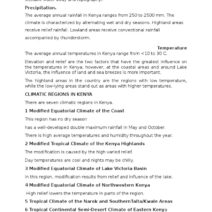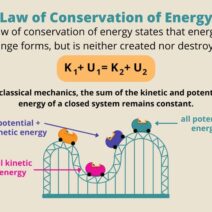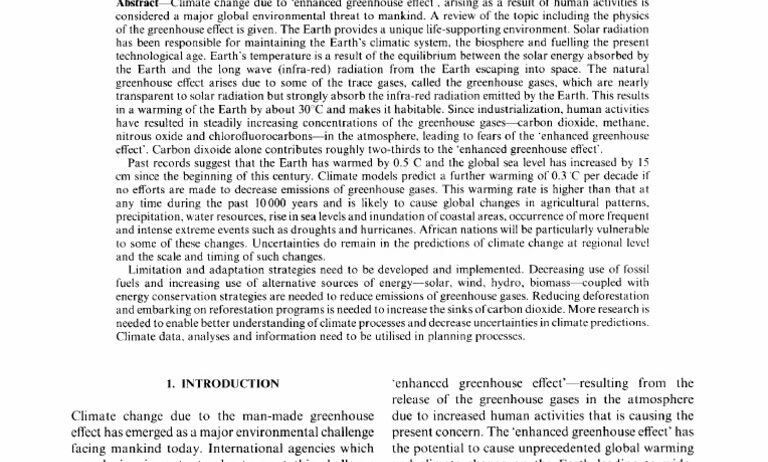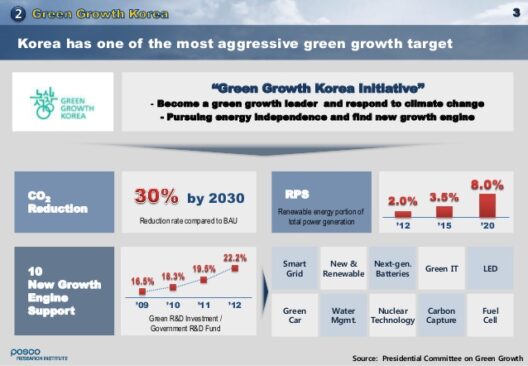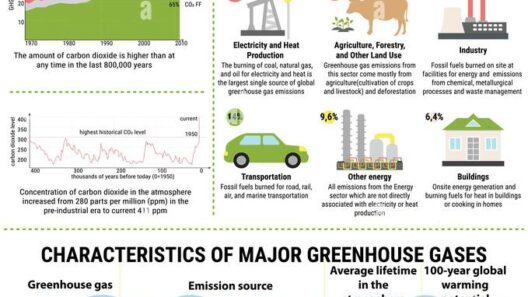The Greenhouse Effect represents a fundamental aspect of our planet’s climate system, one that governs not only the temperature of the Earth but also the intricate balance of life itself. To comprehend this phenomenon is to grasp the very essence of environmental science and climate dynamics. By understanding the Greenhouse Effect, we can cultivate a deeper awareness of the challenges posed by climate change and the actions we can take moving forward.
At its core, the Greenhouse Effect describes how certain gases in Earth’s atmosphere trap heat from the sun, preventing it from escaping back into space. This process is akin to a cozy blanket enveloping the Earth, sustaining life by maintaining a hospitable temperature. However, this seemingly innocuous system becomes increasingly precarious as human activities amplify the concentration of greenhouse gases in the atmosphere, leading to a cascade of climatic consequences.
The pivotal role of greenhouse gases cannot be overstated. Fundamental players in this phenomenon include carbon dioxide (CO2), methane (CH4), and nitrous oxide (N2O). Each one contributes uniquely to the total greenhouse effect:
Carbon dioxide is released through natural processes such as respiration and volcanic eruptions, but anthropogenic sources, including fossil fuel combustion and deforestation, have significantly augmented its levels since the Industrial Revolution. The ramifications are pronounced: CO2 can remain in the atmosphere for centuries, resulting in a long-term warming trend.
Methane, while less abundant than CO2, is significantly more potent as a greenhouse gas, exhibiting a global warming potential that is over twenty times that of carbon dioxide over a 100-year period. Released from agricultural practices, landfills, and natural gas production, its impact on climate change is alarmingly pronounced despite its shorter atmospheric lifespan.
Nitrous oxide, primarily resulting from agricultural practices, industrial activities, and the burning of fossil fuels, boasts a global warming potential nearly 300 times greater than that of CO2, highlighting its critical role in the greenhouse dynamic.
These gases, alongside water vapor, create a delicate equilibrium, but human intervention has undeniably tilted this balance, precipitating a series of environmental crises.
Understanding how the Greenhouse Effect functions encompasses an exploration of the energy dynamics of our atmosphere. Solar radiation penetrates the atmosphere and reaches the Earth’s surface, where it is absorbed and subsequently re-radiated as infrared energy. Greenhouse gases, having a molecular structure that allows them to absorb and emit infrared radiation, trap this outgoing energy, leading to an increase in atmospheric and surface temperatures. This natural process is essential for life, creating what is known as the Earth’s “natural greenhouse effect.” However, the exacerbated version—a result of excessive human-induced emissions—invites various climatic disruptions.
As greenhouse gas concentrations escalate, so too do global temperatures. This warming has devastating ripple effects: melting polar ice caps, rising sea levels, and more extreme weather patterns are just the tip of the proverbial iceberg. It is crucial to recognize that these changes are not isolated phenomena; they are interconnected systems intricately woven into Earth’s ecological tapestry.
The consequences of a warming planet are alarmingly visible. Biodiversity loss is exacerbated as ecosystems struggle to adapt and survive. Coral reefs, for instance, are particularly vulnerable to temperature spikes, leading to widespread bleaching events that threaten marine biodiversity. Furthermore, altered precipitation patterns confound agricultural productivity, posing risks to food security and water resources.
Our grasp of the Greenhouse Effect also requires vigilance in examining socio-economic dimensions. Vulnerable populations, often residing in areas most susceptible to climate-induced disasters, bear the brunt of environmental change. Climate refugees, displaced by floods and droughts, represent an emerging global issue that calls for urgent humanitarian and policy responses.
Therefore, acknowledging the Greenhouse Effect is not merely an academic exercise; it demands our collective action. Mitigation strategies become paramount as we navigate the crossroads of technological advancement and sustainability. Transitioning to renewable energy sources, enhancing energy efficiency, and implementing reforestation projects are critical steps in ameliorating the greenhouse gas emissions trajectory.
In light of these realities, it becomes imperative to illuminate the opportunities for transformation that stem from understanding the Greenhouse Effect. Educating ourselves and those around us fosters a culture of awareness, fueling advocacy for informed policies and practices. The promise of a sustainable future hinges on our ability to rethink our relationships with energy, resources, and the environment.
To encapsulate, the Greenhouse Effect is not simply a scientific concept; it embodies the dynamic interplay between our planet’s physical systems and human activity. As we face an uncertain climatic future, creating a paradigm shift—an awakening to the consequences of our actions—offers hope. It can galvanize communities, policymakers, and individuals alike in the pursuit of a resilient and thriving planet.
Ultimately, understanding the Greenhouse Effect enriches our perspective, awakening an intrinsic curiosity about the natural world and our role within it. It stands as a clarion call: the responsibility of stewardship is ours to embrace, inspiring the collective shift toward a sustainable and equitable future.
